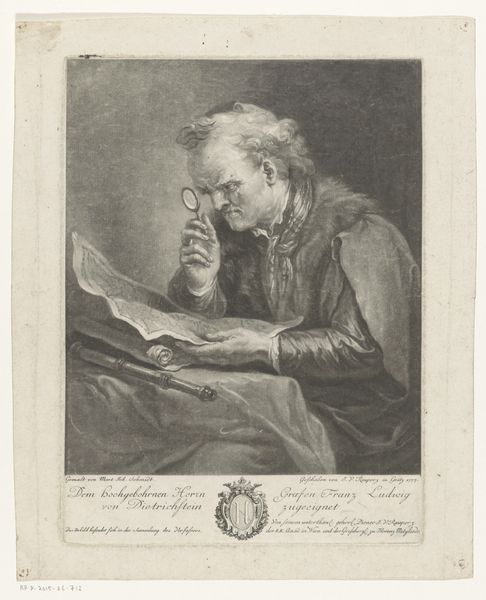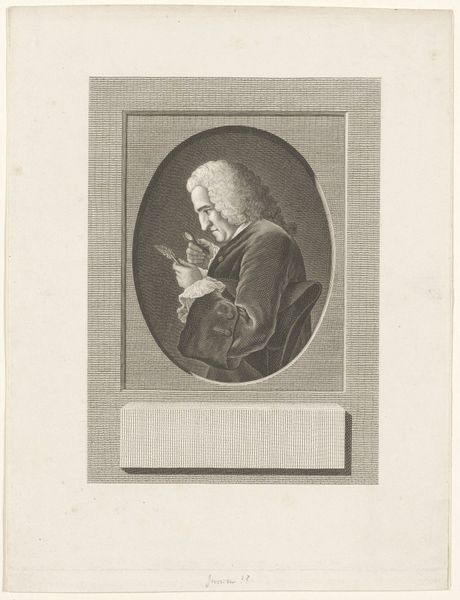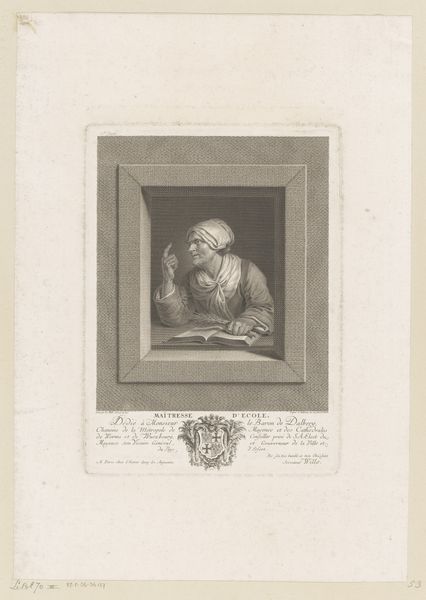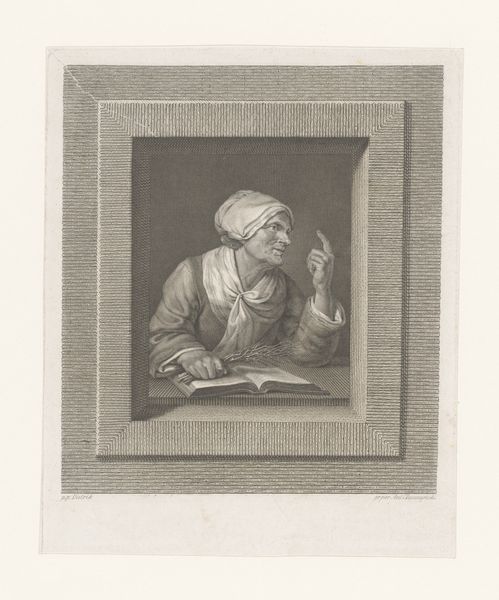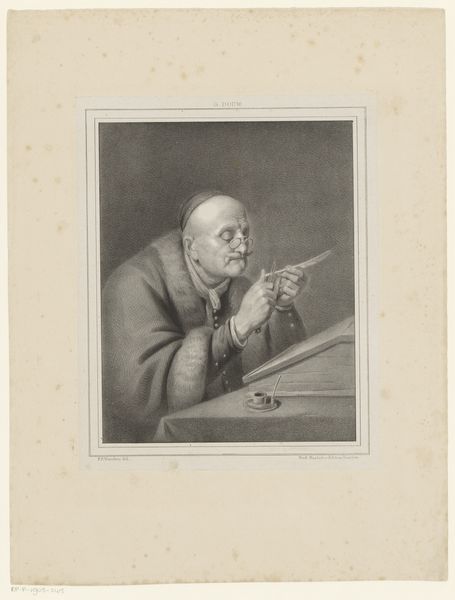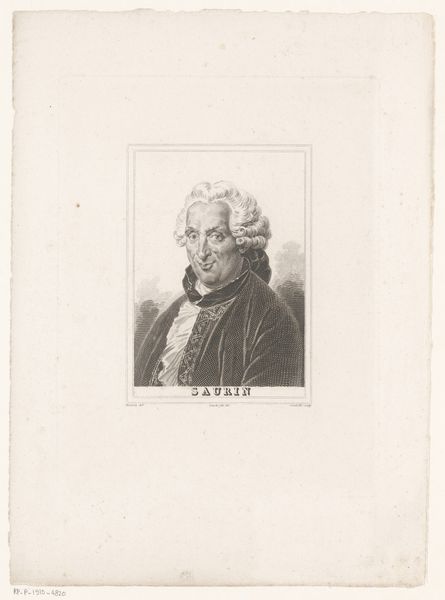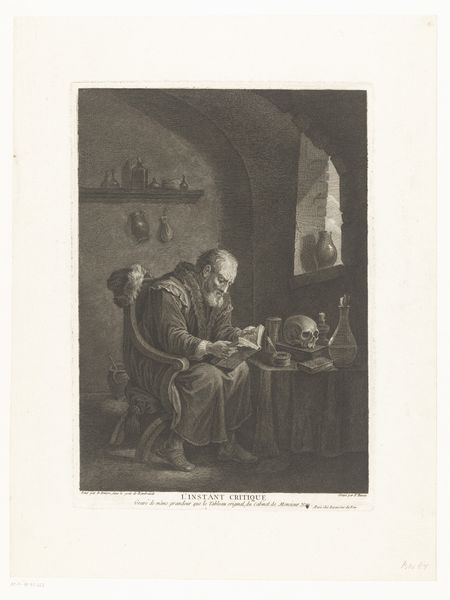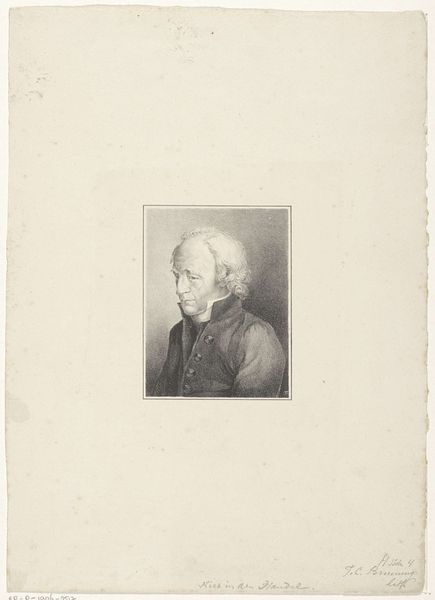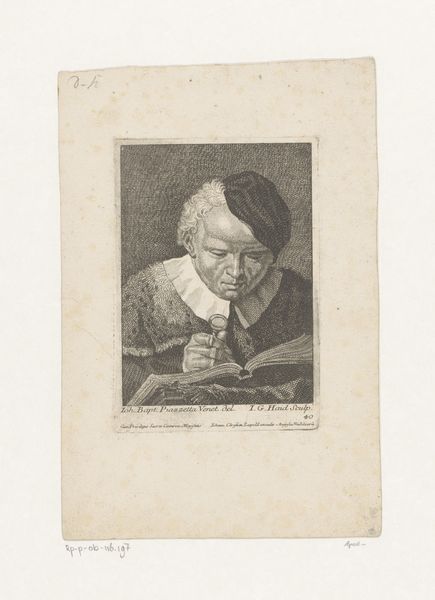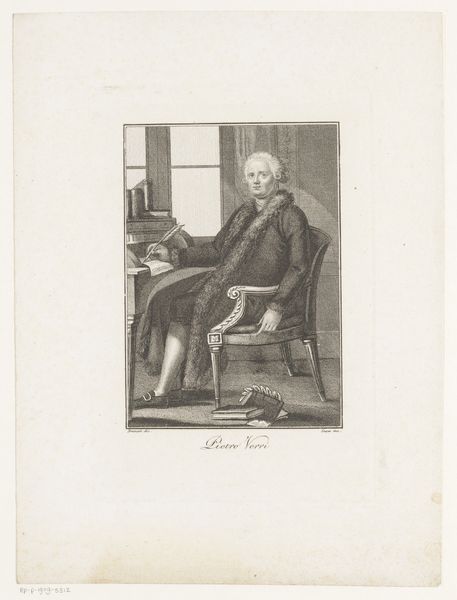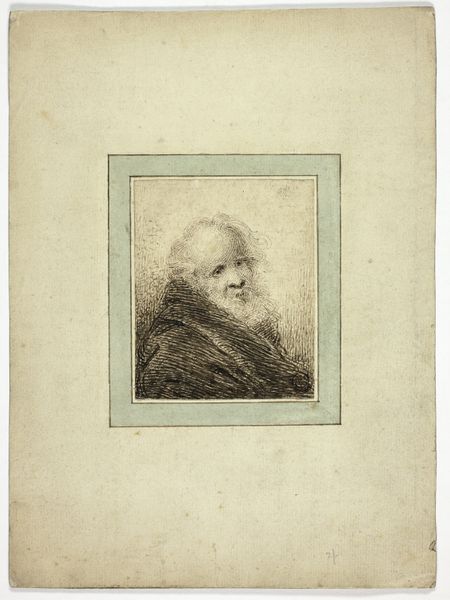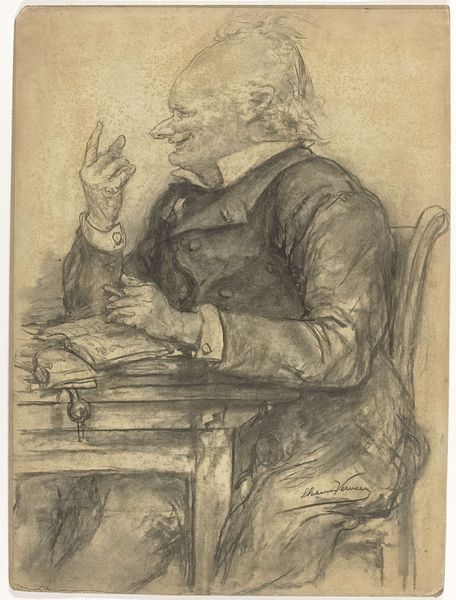
print, engraving
#
portrait
#
neoclacissism
# print
#
history-painting
#
academic-art
#
engraving
#
realism
Dimensions: height 411 mm, width 330 mm
Copyright: Rijks Museum: Open Domain
Curator: This is a print entitled "Portret van Benjamin Franklin," likely from 1787, attributed to Thomas Ryder I. It is rendered in engraving, very much within the Neoclassical style. My initial reaction is struck by the intimacy of the portrayal. Franklin is completely engrossed in his reading, caught in a private moment. Editor: It does offer an unusual level of informality. Instead of the stately portraits that defined much of his public image, we see an aging scholar. The books in his hands serve as obvious symbols, acting almost like a hieroglyph for wisdom and contemplation, traits often associated with him. But there's more at play than simple visual tropes, surely. Curator: Exactly. By the late 1780s, Franklin was already a legendary figure, both in America and in Europe. Ryder likely intended to emphasize his intellectualism. It’s an academic take fitting into a time when the idea of civic virtue and learned leadership was very current in Europe and especially relevant, of course, across the Atlantic. The portrait taps into a powerful symbolic tradition of associating leaders with scholarship. Editor: True, that framed composition adds a layer. It creates an effect as though we are looking into his private sphere, granting the viewer privileged access. Does this relate to Franklin's own promotion of himself? His deliberate creation of a "public intellectual" persona that has shaped perceptions of American identity? Curator: To an extent, yes. Consider how carefully Franklin cultivated his image throughout his life—from his "Poor Richard's Almanack" persona to his role as a diplomat in France. Ryder’s print, however, speaks to something broader: a late eighteenth-century fascination with depicting intellectualism as a defining characteristic of leadership. Editor: And this ties neatly into the Neoclassical aesthetics surrounding it, as well as other intellectual movements that found that the roots of governance could be found in philosophy. So much for so seemingly simple a scene. It just underscores that every choice, from Franklin’s relaxed posture to the engraver’s careful lines, contributes to its impact on the collective narrative. Curator: I concur completely. It's a window into not just a man but an era—how they wished to be perceived and to cast leaders in history. A brilliant visual statement.
Comments
No comments
Be the first to comment and join the conversation on the ultimate creative platform.
